What Are You Reading? Special: An Interview with Nicola Watson
Professor Nicola Watson on The Author’s Effects: On Writer’s House MuseumsWe’ve been delighted to have so many excellent contributors to our ‘What Are You Reading?’ series on the K-SAA Blog. Today, we present a special Q&A - an interview with Nicola Watson of the Open University to mark the publication of her monograph The Author’s Effects: On Writer’s House Museums (Oxford: Oxford University Press, 2020).Nicola Watson is a specialist in the literature and culture of the Romantic period. Her research focuses on authorial afterlives and the associated histories of literary tourism, literary commemoration, and the literary museum. She is the PI of the AHRC-funded project DREAMing Romantic Europe. Her latest publication, The Author’s Effects, is the only book about the emergence of the writer’s house museum in the Romantic period as a distinct cultural formation and convention. It considers the writer's house museum as a form of literary biography crucial to the construction and maintenance of authorial celebrity, and explores how imaginative literature has produced the celebrity of physical objects and places. 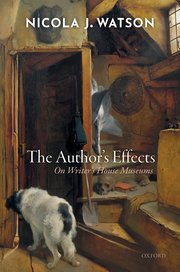 Your writing talks of the museum bringing out the ‘liveness’ in a writer: ‘the driving impulse is to assert the ongoing “liveness” of the writer by locating him or her in a specific domestic time and space, so enabling personal encounter between reader and writer, bypassing the medium of print and short-circuiting the alienated process of reading’ (p 11). How effectively do you think writer’s house museums encourage visitors to read the author’s work? Is it difficult for museums to achieve such engagement?Historically, writer’s house museums and associated sites have welcomed visitors who want to bring their reading of books ‘alive’ by occupying the same spaces that inspired or sustained the writer. It is only in the last twenty years or so, with a vast expansion of leisure travel, that what the Victorians and Edwardians would have called ‘literary pilgrimage’ has given way to opportunistic and uninformed visits. Accordingly, as you suggest, museums have become ever more anxious about how to cope with visitors who arrive without having done the necessary homework - that’s to say, without having read the writer in question, let alone conceived an imagined personal relationship with that writer that prompts the desire to spend time in their ‘homes and haunts’. From the longstanding idea that such museums are as much custodians of national discourse as facilitators of private passions, follows a sense that visitors ought to leave less ignorant of the national heritage than they arrived, and (more nebulously) that the more ignorant the visitor, the more good the museum can do. Hence (in part) the pressure on museums to attract and educate a new diversity of audiences.The practical problem for writer’s house museums is that, unlike music or the visual arts, which are enacted for their audiences in real time and space (and can be played in the background or shown on the walls to neophyte visitors), a book is a less immediately accessible matter. The paradox is that the writer’s house as an idea comes into being as a way of making the book more accessible, by translating enough of it into an immersive present of time, space, and materiality.So the trick modern museums have to pull off is to make it possible for visitors to internalise the writing at the same time as encountering the writer. This is not, therefore, merely a matter of stocking the gift-shop with the writer’s books. Museums have devised various ways of making writing happen in relation to space and time: painting writing on walls as Romantically wavering vaporous lines (as at the Coleridge cottage in Nether Stowey, for instance), projecting video of writing slowly appearing on walls (as in the portal exhibition to Shakespeare’s Birthplace), providing audio set off by movement or at the touch of a button (Sissinghurst); installing moveable captions in a house (Dove Cottage changes its captions from Dorothy Wordsworth’s Journal according to what day of the year it is); running live reading events in situ (as at William Cullen Bryant’s homestead in New England); or hiring in creative artists to rethink writing as sculpture, installation, textiles, or pseudo museum objects (both the Burns Birthplace and Haworth Parsonage have been particularly inventive here). These strategies work better with certain sorts of texts than with others. Lyric poems, letters and diaries, because they are characteristically very close to the present moment, tend to be much more readable in the environment of the museum than fiction – Coleridge Cottage offers a good example of this. The exception to this rule is where fictional plots have become so imbricated with the actuality of the writer’s life that the two actually reinforce and shadow each other – as in the Parsonage at Haworth, or Bulgakov’s house in Kiev, or Joyce’s tower at Sandycove. The sort of on-site reading that visitors engage in is a sort of slow reading in snippet view; the house typically becomes a spatialised anthology.
Your writing talks of the museum bringing out the ‘liveness’ in a writer: ‘the driving impulse is to assert the ongoing “liveness” of the writer by locating him or her in a specific domestic time and space, so enabling personal encounter between reader and writer, bypassing the medium of print and short-circuiting the alienated process of reading’ (p 11). How effectively do you think writer’s house museums encourage visitors to read the author’s work? Is it difficult for museums to achieve such engagement?Historically, writer’s house museums and associated sites have welcomed visitors who want to bring their reading of books ‘alive’ by occupying the same spaces that inspired or sustained the writer. It is only in the last twenty years or so, with a vast expansion of leisure travel, that what the Victorians and Edwardians would have called ‘literary pilgrimage’ has given way to opportunistic and uninformed visits. Accordingly, as you suggest, museums have become ever more anxious about how to cope with visitors who arrive without having done the necessary homework - that’s to say, without having read the writer in question, let alone conceived an imagined personal relationship with that writer that prompts the desire to spend time in their ‘homes and haunts’. From the longstanding idea that such museums are as much custodians of national discourse as facilitators of private passions, follows a sense that visitors ought to leave less ignorant of the national heritage than they arrived, and (more nebulously) that the more ignorant the visitor, the more good the museum can do. Hence (in part) the pressure on museums to attract and educate a new diversity of audiences.The practical problem for writer’s house museums is that, unlike music or the visual arts, which are enacted for their audiences in real time and space (and can be played in the background or shown on the walls to neophyte visitors), a book is a less immediately accessible matter. The paradox is that the writer’s house as an idea comes into being as a way of making the book more accessible, by translating enough of it into an immersive present of time, space, and materiality.So the trick modern museums have to pull off is to make it possible for visitors to internalise the writing at the same time as encountering the writer. This is not, therefore, merely a matter of stocking the gift-shop with the writer’s books. Museums have devised various ways of making writing happen in relation to space and time: painting writing on walls as Romantically wavering vaporous lines (as at the Coleridge cottage in Nether Stowey, for instance), projecting video of writing slowly appearing on walls (as in the portal exhibition to Shakespeare’s Birthplace), providing audio set off by movement or at the touch of a button (Sissinghurst); installing moveable captions in a house (Dove Cottage changes its captions from Dorothy Wordsworth’s Journal according to what day of the year it is); running live reading events in situ (as at William Cullen Bryant’s homestead in New England); or hiring in creative artists to rethink writing as sculpture, installation, textiles, or pseudo museum objects (both the Burns Birthplace and Haworth Parsonage have been particularly inventive here). These strategies work better with certain sorts of texts than with others. Lyric poems, letters and diaries, because they are characteristically very close to the present moment, tend to be much more readable in the environment of the museum than fiction – Coleridge Cottage offers a good example of this. The exception to this rule is where fictional plots have become so imbricated with the actuality of the writer’s life that the two actually reinforce and shadow each other – as in the Parsonage at Haworth, or Bulgakov’s house in Kiev, or Joyce’s tower at Sandycove. The sort of on-site reading that visitors engage in is a sort of slow reading in snippet view; the house typically becomes a spatialised anthology. Over the last ten years or so, the modern writer’s house museum has shown signs of serving as a space ever more explicitly dedicated to celebrating and enabling the workings of literary inspiration. It looked as though, in the not too distant future, such house museums might become one of the few places in which time and space might be made to encounter books. Time for museums to open late, set out comfortable chairs and low lights, and make a quiet companionable space for people of all ages to read long into the night. However, Covid-19 has changed the foreseeable future for such museums, as for much tourism. A drastic reduction in the number of travellers (especially older ones), combined with the rigours of social distancing, at first glance spells financial disaster. The key here, I think, will be to adapt the offer. The ‘liveness’ that I talk about in The Author’s Effects will have to evolve for many into a virtual experience. Previously footloose travellers will be forced to travel in imagination from armchairs via books and other media. Suddenly, therefore, it is possible to imagine a gift of a virtual experience, a literary travel hamper. It would include the essential literary texts, audio of an actor reading extracts, a curatorial video, access to an online collection of exhibits, and a live, ticketed virtual tour of the house itself. And suddenly, the doors of the museum open wide to all those who could never have visited the house even before the pandemic.I really enjoyed the section in your book on Keats’s life and death masks (pp. 34-39). You suggest that ‘death delivers the Romantic poet over to the judgement of posterity, turning the writer into the author; admiring tourists ‘rescue’ him from death’ (p. 39). The presence of the death mask in Keats’s home in Hampstead adds a crucially tragic element to the story of the poet’s life in that building – important when appealing to visitors’ emotions. Will your book allow readers to interpret the curatorial storytelling of literary museums with a more informed and analytical approach; or perhaps would you be more interested in individual responses to an author arising as visitors experience exhibits, for example the masks?In practice, the book’s methodology creates a tension – on the one hand, it is constructed out of case-studies of individual objects that have come to exert strong affect, and on the other hand, it argues that although these objects’ value rests in their uniqueness, there is a discernibly conventional grammar of writer’s house museums. So Keats’ death-mask pertains uniquely to Keats (although, being a cast, it is not actually unique), but the idea that a writer’s house museum should contain an artefact that makes the author’s dead body present and immortal is very common. The appeal of the book to the general reader has proven to be the stories of the individual objects, the use of it to the academic is proving to be as a way of thinking about the figure of the author (or the author-effect, to invoke Foucault) andindeed about the history of reading and readerly affect, but the usefulness of the book to curators seems to me rather trickier to assert. Anatomising emotional response often disables it, and that is something a museum curator or guide cannot afford to do!
Over the last ten years or so, the modern writer’s house museum has shown signs of serving as a space ever more explicitly dedicated to celebrating and enabling the workings of literary inspiration. It looked as though, in the not too distant future, such house museums might become one of the few places in which time and space might be made to encounter books. Time for museums to open late, set out comfortable chairs and low lights, and make a quiet companionable space for people of all ages to read long into the night. However, Covid-19 has changed the foreseeable future for such museums, as for much tourism. A drastic reduction in the number of travellers (especially older ones), combined with the rigours of social distancing, at first glance spells financial disaster. The key here, I think, will be to adapt the offer. The ‘liveness’ that I talk about in The Author’s Effects will have to evolve for many into a virtual experience. Previously footloose travellers will be forced to travel in imagination from armchairs via books and other media. Suddenly, therefore, it is possible to imagine a gift of a virtual experience, a literary travel hamper. It would include the essential literary texts, audio of an actor reading extracts, a curatorial video, access to an online collection of exhibits, and a live, ticketed virtual tour of the house itself. And suddenly, the doors of the museum open wide to all those who could never have visited the house even before the pandemic.I really enjoyed the section in your book on Keats’s life and death masks (pp. 34-39). You suggest that ‘death delivers the Romantic poet over to the judgement of posterity, turning the writer into the author; admiring tourists ‘rescue’ him from death’ (p. 39). The presence of the death mask in Keats’s home in Hampstead adds a crucially tragic element to the story of the poet’s life in that building – important when appealing to visitors’ emotions. Will your book allow readers to interpret the curatorial storytelling of literary museums with a more informed and analytical approach; or perhaps would you be more interested in individual responses to an author arising as visitors experience exhibits, for example the masks?In practice, the book’s methodology creates a tension – on the one hand, it is constructed out of case-studies of individual objects that have come to exert strong affect, and on the other hand, it argues that although these objects’ value rests in their uniqueness, there is a discernibly conventional grammar of writer’s house museums. So Keats’ death-mask pertains uniquely to Keats (although, being a cast, it is not actually unique), but the idea that a writer’s house museum should contain an artefact that makes the author’s dead body present and immortal is very common. The appeal of the book to the general reader has proven to be the stories of the individual objects, the use of it to the academic is proving to be as a way of thinking about the figure of the author (or the author-effect, to invoke Foucault) andindeed about the history of reading and readerly affect, but the usefulness of the book to curators seems to me rather trickier to assert. Anatomising emotional response often disables it, and that is something a museum curator or guide cannot afford to do! I study Shelley, and for this reason, I’d love to know if you think there could or should be a Shelley museum in one of the (many!) buildings Percy and Mary took lodgings in. Where would it be?Just at the moment, I’d favour setting up a virtual Shelley museum! I am sure it would be successful – and it would suit Shelley, who always seems to have been trying to be somewhere else, physically, politically, and spiritually.More seriously, it is quite hard to construct a house museum when it was a matter of temporary lodgings as opposed to lengthy ownership. One of the few extant examples is of course the Keats-Shelley house in Rome; the import of this apartment depends on Keats’ death there, on its proximity to his grave, and on Americans’ sense of Rome as the centre of Western culture.
I study Shelley, and for this reason, I’d love to know if you think there could or should be a Shelley museum in one of the (many!) buildings Percy and Mary took lodgings in. Where would it be?Just at the moment, I’d favour setting up a virtual Shelley museum! I am sure it would be successful – and it would suit Shelley, who always seems to have been trying to be somewhere else, physically, politically, and spiritually.More seriously, it is quite hard to construct a house museum when it was a matter of temporary lodgings as opposed to lengthy ownership. One of the few extant examples is of course the Keats-Shelley house in Rome; the import of this apartment depends on Keats’ death there, on its proximity to his grave, and on Americans’ sense of Rome as the centre of Western culture.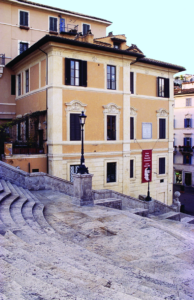 What is your favourite author’s house museum?I could never have researched and written it if I weren’t fascinated by all of them – but it must say something that I chose to launch this book at Keats House in Hampstead…You note the importance of an emerging celebrity culture at the time of the Romantic writers (p. 8). Do you think the Romantics’ awareness of their own celebrity encouraged authors from that point onwards to be conscious of the intimacy readers and followers would sometimes seek? Has this influenced what is available to be collected and how particular authors accounted for themselves in journals and biographical notes?Both Byron and Scott were conscious of their status as major celebrities and of being in some sense collector’s items in the shape of (for instance) hair, autograph letters, or small personal belongings. Arguably, Scott fuelled this sort of thing by building the antiquarian fantasy of Abbotsford and producing the Magnum Opus edition. But to a lesser degree, most Romantic writers right across Europe seem to have engaged in this game. So, understanding authorship as able to be embodied in objects was a habit common to readers and to writers. This, intriguingly, doesn’t seem to have operated to the same extent around women writers: such items as survive seem for the most part to have been held out of family affection.
What is your favourite author’s house museum?I could never have researched and written it if I weren’t fascinated by all of them – but it must say something that I chose to launch this book at Keats House in Hampstead…You note the importance of an emerging celebrity culture at the time of the Romantic writers (p. 8). Do you think the Romantics’ awareness of their own celebrity encouraged authors from that point onwards to be conscious of the intimacy readers and followers would sometimes seek? Has this influenced what is available to be collected and how particular authors accounted for themselves in journals and biographical notes?Both Byron and Scott were conscious of their status as major celebrities and of being in some sense collector’s items in the shape of (for instance) hair, autograph letters, or small personal belongings. Arguably, Scott fuelled this sort of thing by building the antiquarian fantasy of Abbotsford and producing the Magnum Opus edition. But to a lesser degree, most Romantic writers right across Europe seem to have engaged in this game. So, understanding authorship as able to be embodied in objects was a habit common to readers and to writers. This, intriguingly, doesn’t seem to have operated to the same extent around women writers: such items as survive seem for the most part to have been held out of family affection.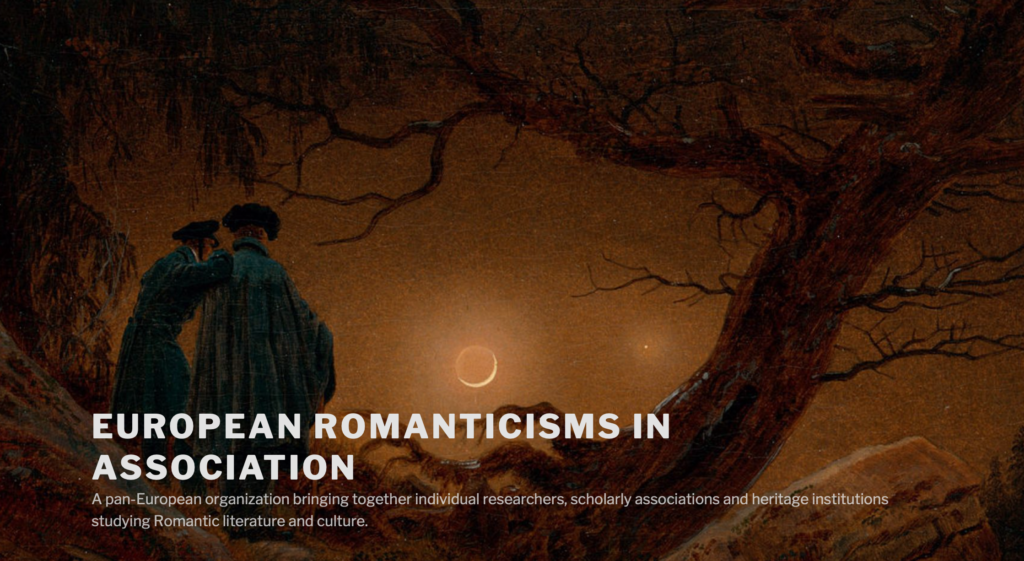 ‘The history of making writer’s house museums shows that even single objects may have functioned effectively to house a writer, well before they were incorporated into a writer’s house museum. The question of precisely what sort of objects these are goes to the heart of the nature and ideological work of the writer’s house museum. After all, they are not (as they would be in other museums) displayed because they are typical, valuable, or rare’ (p. 11). Your work on RÊVE (Romantic Europe: The Virtual Exhibition) identifies a variety of Romantic objects as of individual interest whilst maintaining a focus on their collection and location. How important do you think collection and location are to an audience? How do you think single objects ‘house’ a writer even in a virtual setting, and what can this bring to audiences, academic and otherwise?The methodology I used in The Author’s Effects to get at the nature and ideological work of the writer’s house museum was to write microbiographies of particularly celebrated objects that had found their way into such museums, to construct a taxonomy of such objects, and so to build up an idea of the writer’s house museum as a sort of literary genre. As you imply, this methodology also underpins the collaborative project of building RÊVE (Romantic Europe: The Virtual Exhibition). This investigates how material culture has worked to transmit and preserve what we would now describe as ‘Romantic’ habits of mind across Europe, and to do this it draws on collections and locations right across Europe – 28 collections, and 20 countries at the last count, and more coming. Historically, location has been more important to an audience, in that it strongly inflects the cultural meaning of an object; for example, the inkstand displayed in Nether Stowey means, roughly, that Coleridge wrote there (although it was an inkstand he acquired later in life), whereas Coleridge’s inkstand (with which he is said to have written ‘The Rime of the Ancient Mariner’) displayed on Longfellow’s desk in Cambridge, Mass., means that Longfellow was heritor to an Anglophone Romantic poetic tradition. But, as this example neatly shows, displaying a collection involves locating it.So what then has happened when RÊVE virtualises an object, disembodying it, dislocating it, disconnecting it? Such dematerialisation makes museum curators feel anxious, in part because it so plainly attacks what Walter Benjamin called the ‘aura’ of the unique physical object, and in part because material culture is a museum’s home medium. Scholars have the opposite anxiety – they tend to feel very dubious about housing the writing within the writer, and even more sceptical about locating the writer within the material (manuscript aside). Virtualising an object means to image it (not unproblematic) and to narrativize it, which has been the focus of RÊVE’s work to date. RÊVE has managed to explore and describe the various ways in which writing and the writer have been and can be in the future imaginatively housed within physical objects, and how inanimate objects therefore come to breathe a borrowed subjectivity – exactly how Benjamin describes aura. So although the virtual is not exactly a substitute for encountering the real, it can serve as a space to expand an object’s aura much more elaborately than is possible in a museum. Our latest collection, devoted to the Cowper and Newton Museum is therefore a timely experiment in maintaining access to a small museum under current circumstances; a virtual exhibition is a cheap, hygienically practical way of opening up the collection to audiences old and new, local and far-flung. It also illustrates three further strengths of a virtual exhibition. The first is that, although in scholarly terms 1000 words is very short-form writing, considered as a caption this is a very leisurely long form. Secondly, it is possible to write objects into a collection ‘story’ without needing otherwise to co-locate them, or even bring them out of storage. Finally, the thing about a virtual exhibition is that it is almost unnervingly cheap for curator and visitor alike. (Visit here – it’s free!)What books are in your ‘to read next’ pile right now (poetry, fiction, anything!)? In particular, what studies of Romantic literature are in your ‘to read next’ pile right now? What does this tell us about what is next for your research?Like others, I find that lockdown has induced a certain lassitude – and that diaries and letters, because they’re so very close to their own present – are congruent with living life in domestic close-up and with a restricted view of the future. So Dorothy Wordsworth’s Grasmere Journal is sitting on the bedside table to be dipped into, as are William Cowper’s letters.
‘The history of making writer’s house museums shows that even single objects may have functioned effectively to house a writer, well before they were incorporated into a writer’s house museum. The question of precisely what sort of objects these are goes to the heart of the nature and ideological work of the writer’s house museum. After all, they are not (as they would be in other museums) displayed because they are typical, valuable, or rare’ (p. 11). Your work on RÊVE (Romantic Europe: The Virtual Exhibition) identifies a variety of Romantic objects as of individual interest whilst maintaining a focus on their collection and location. How important do you think collection and location are to an audience? How do you think single objects ‘house’ a writer even in a virtual setting, and what can this bring to audiences, academic and otherwise?The methodology I used in The Author’s Effects to get at the nature and ideological work of the writer’s house museum was to write microbiographies of particularly celebrated objects that had found their way into such museums, to construct a taxonomy of such objects, and so to build up an idea of the writer’s house museum as a sort of literary genre. As you imply, this methodology also underpins the collaborative project of building RÊVE (Romantic Europe: The Virtual Exhibition). This investigates how material culture has worked to transmit and preserve what we would now describe as ‘Romantic’ habits of mind across Europe, and to do this it draws on collections and locations right across Europe – 28 collections, and 20 countries at the last count, and more coming. Historically, location has been more important to an audience, in that it strongly inflects the cultural meaning of an object; for example, the inkstand displayed in Nether Stowey means, roughly, that Coleridge wrote there (although it was an inkstand he acquired later in life), whereas Coleridge’s inkstand (with which he is said to have written ‘The Rime of the Ancient Mariner’) displayed on Longfellow’s desk in Cambridge, Mass., means that Longfellow was heritor to an Anglophone Romantic poetic tradition. But, as this example neatly shows, displaying a collection involves locating it.So what then has happened when RÊVE virtualises an object, disembodying it, dislocating it, disconnecting it? Such dematerialisation makes museum curators feel anxious, in part because it so plainly attacks what Walter Benjamin called the ‘aura’ of the unique physical object, and in part because material culture is a museum’s home medium. Scholars have the opposite anxiety – they tend to feel very dubious about housing the writing within the writer, and even more sceptical about locating the writer within the material (manuscript aside). Virtualising an object means to image it (not unproblematic) and to narrativize it, which has been the focus of RÊVE’s work to date. RÊVE has managed to explore and describe the various ways in which writing and the writer have been and can be in the future imaginatively housed within physical objects, and how inanimate objects therefore come to breathe a borrowed subjectivity – exactly how Benjamin describes aura. So although the virtual is not exactly a substitute for encountering the real, it can serve as a space to expand an object’s aura much more elaborately than is possible in a museum. Our latest collection, devoted to the Cowper and Newton Museum is therefore a timely experiment in maintaining access to a small museum under current circumstances; a virtual exhibition is a cheap, hygienically practical way of opening up the collection to audiences old and new, local and far-flung. It also illustrates three further strengths of a virtual exhibition. The first is that, although in scholarly terms 1000 words is very short-form writing, considered as a caption this is a very leisurely long form. Secondly, it is possible to write objects into a collection ‘story’ without needing otherwise to co-locate them, or even bring them out of storage. Finally, the thing about a virtual exhibition is that it is almost unnervingly cheap for curator and visitor alike. (Visit here – it’s free!)What books are in your ‘to read next’ pile right now (poetry, fiction, anything!)? In particular, what studies of Romantic literature are in your ‘to read next’ pile right now? What does this tell us about what is next for your research?Like others, I find that lockdown has induced a certain lassitude – and that diaries and letters, because they’re so very close to their own present – are congruent with living life in domestic close-up and with a restricted view of the future. So Dorothy Wordsworth’s Grasmere Journal is sitting on the bedside table to be dipped into, as are William Cowper’s letters.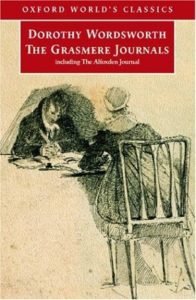
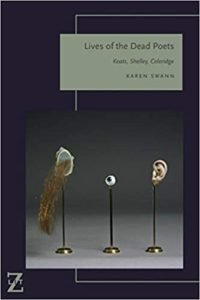 Much of my recent reading has been to do about equally with needing to write reflectively on RÊVE and with making sections of the new Open University MA in English which will deal with literary tourism and literary biography: so I’ve finally got around to reading Karen Swann’s elegantly argued introduction to her book of essays Lives of the Dead Poets: Keats, Shelley, Coleridge (2019) about authorial biography as a way of reading imaginative literature that emerges in the period. And I’ve also been dipping into the lively collection of short essays on individual houses edited by Hermione Lee and Kate Kennedy, Lives of Houses (2020) for inspiration.Otherwise, I am about to turn my attention to researching and writing a RÊVE exhibit for the next DREAMing Romantic Europe workshop which we’ve reinvented as an expanded Zoom conference for 100 participants in conjunction with the Wordsworth Trust in late June 2020. The topic of the workshop is Romantic Media, and I am flirting with the idea of writing a miniaturised cultural history of the idea/practice of viewing ruins and certain natural phenomena ‘by moonlight’. So that is going to send me back to Chloe Chard’s work on travel-writing on Rome, to anything I can find to inform me about the European art-market for views by moonlight, and then perhaps to my favourite all-time awful would-be Romantic genius, Sir Samuel Egerton Brydges, who can generally be relied upon to adopt all the essential conventional postures.
Much of my recent reading has been to do about equally with needing to write reflectively on RÊVE and with making sections of the new Open University MA in English which will deal with literary tourism and literary biography: so I’ve finally got around to reading Karen Swann’s elegantly argued introduction to her book of essays Lives of the Dead Poets: Keats, Shelley, Coleridge (2019) about authorial biography as a way of reading imaginative literature that emerges in the period. And I’ve also been dipping into the lively collection of short essays on individual houses edited by Hermione Lee and Kate Kennedy, Lives of Houses (2020) for inspiration.Otherwise, I am about to turn my attention to researching and writing a RÊVE exhibit for the next DREAMing Romantic Europe workshop which we’ve reinvented as an expanded Zoom conference for 100 participants in conjunction with the Wordsworth Trust in late June 2020. The topic of the workshop is Romantic Media, and I am flirting with the idea of writing a miniaturised cultural history of the idea/practice of viewing ruins and certain natural phenomena ‘by moonlight’. So that is going to send me back to Chloe Chard’s work on travel-writing on Rome, to anything I can find to inform me about the European art-market for views by moonlight, and then perhaps to my favourite all-time awful would-be Romantic genius, Sir Samuel Egerton Brydges, who can generally be relied upon to adopt all the essential conventional postures.
(Questions by Anna Mercer - May 2020)

